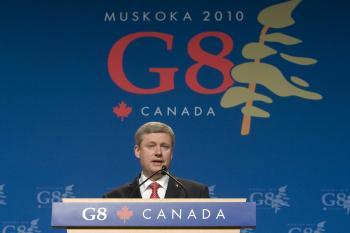[xtypo_dropcap]T[/xtypo_dropcap]oronto’s middle-class communities are disappearing fast and being replaced by wealthy and poor neighbourhoods, says a study released Wednesday.
Titled “Three Cities Within Toronto,” the report was authored by David Hulchanski, associate director of research at the University of Toronto’s Cities Centre. It says that without changes to public policy, the polarizing trend will continue.
In 1970, two-thirds of Toronto’s communities had average incomes within 20 percent of the city’s overall average income, which is how the study’s researchers define “middle-income.”
Not so anymore. By 2005 only 29 percent of the communities fit that description. Meanwhile, Toronto’s high-income communities grew from 15 percent to 19 percent, and its low-income communities increased from 19 percent to an astonishing 53 percent over the same 35 years.
“These are long-term trends,” the report says, adding that most changes are “persistent.”
“The polarization of the city into wealthy neighbourhoods and greater numbers of disadvantaged neighbourhoods is continuing and middle-income neighbourhoods are disappearing.”
Prof. Hulchanski warns of another disturbing finding—that poverty is being concentrated at the outer edges of the city where services are most difficult to access.
“In the 1970s, most of the city’s low-income neighbourhoods were in the inner city. This meant that low-income households had good access to transit and services. Some of these neighbourhoods have gentrified and are now home to affluent households, while low-income households are concentrated in the northeastern and northwestern parts of the city (the inner suburbs), with relatively poor access to transit and services.”
The report describes three “cities” within Toronto. In “City No. 1” income grew by 20 percent or more compared to the city average between 1970 and 2005. In “City No. 2” income stayed close to the average, and in “City No. 3” income dropped more than 20 percent compared to the city average.
The report predicts that if trends continue, 59 percent of the city will belong to City No. 3 by 2025 and 30 percent will belong to City No. 1, with only nine percent left in City No. 2.
The trend of segregation can be countered, Hulchanski believes, by changes in public policy.
“These trends could be slowed or reversed by public policies that would make housing more affordable to low-income households, by efforts to expand access to transit and services in neighbourhoods where the need is greatest, and by renewing the aging high-rise neighbourhoods scattered throughout City No. 3.”
Titled “Three Cities Within Toronto,” the report was authored by David Hulchanski, associate director of research at the University of Toronto’s Cities Centre. It says that without changes to public policy, the polarizing trend will continue.
In 1970, two-thirds of Toronto’s communities had average incomes within 20 percent of the city’s overall average income, which is how the study’s researchers define “middle-income.”
Not so anymore. By 2005 only 29 percent of the communities fit that description. Meanwhile, Toronto’s high-income communities grew from 15 percent to 19 percent, and its low-income communities increased from 19 percent to an astonishing 53 percent over the same 35 years.
“These are long-term trends,” the report says, adding that most changes are “persistent.”
“The polarization of the city into wealthy neighbourhoods and greater numbers of disadvantaged neighbourhoods is continuing and middle-income neighbourhoods are disappearing.”
Prof. Hulchanski warns of another disturbing finding—that poverty is being concentrated at the outer edges of the city where services are most difficult to access.
“In the 1970s, most of the city’s low-income neighbourhoods were in the inner city. This meant that low-income households had good access to transit and services. Some of these neighbourhoods have gentrified and are now home to affluent households, while low-income households are concentrated in the northeastern and northwestern parts of the city (the inner suburbs), with relatively poor access to transit and services.”
The report describes three “cities” within Toronto. In “City No. 1” income grew by 20 percent or more compared to the city average between 1970 and 2005. In “City No. 2” income stayed close to the average, and in “City No. 3” income dropped more than 20 percent compared to the city average.
The report predicts that if trends continue, 59 percent of the city will belong to City No. 3 by 2025 and 30 percent will belong to City No. 1, with only nine percent left in City No. 2.
The trend of segregation can be countered, Hulchanski believes, by changes in public policy.
“These trends could be slowed or reversed by public policies that would make housing more affordable to low-income households, by efforts to expand access to transit and services in neighbourhoods where the need is greatest, and by renewing the aging high-rise neighbourhoods scattered throughout City No. 3.”



